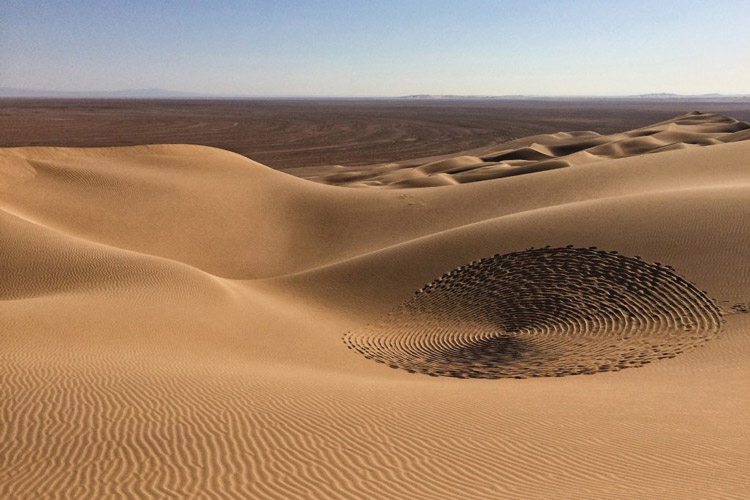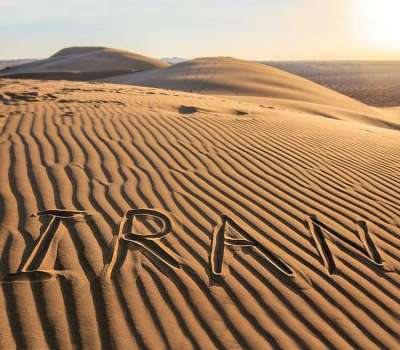
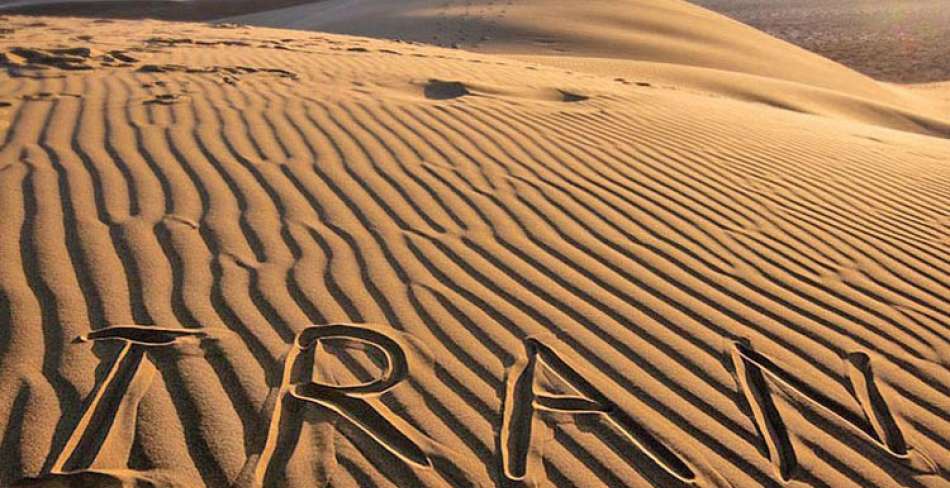
Owing to the special geographical position, Iran is a country with four various climates including mild and humid, cold, warm, and hot and dry climates in different regions. So Iran enjoys coastal areas, forests, mountains and lush plains, as well as the beautiful deserts. Iran has vast deserts especially in the center which occupies about a quarter of Iran area. The most famous deserts of Iran are located in the Yazd, Isfahan and Kerman provinces. These deserts are mostly intact which creates a good opportunity to enjoy the peace and quietness of the desert. On the other hand, some parts of these deserts has turned into camping sites with different recreational equipment such as off-road vehicles, night gatherings, star astronomy for those interested in astronomy. These camping sites has made an opportunity to enjoy both the quietness of the desert as well as amusing opportunities as mentioned before.
Below, we review the most interesting and exciting of Iran deserts province by province.
Yazd Deserts
Yazd Province is located in the central plateau of Iran on the periphery of Lut Desert, extending over an area of 131,575 km2. Yazd is famous for its historical sites; moreover, a large area of Yazd is covered by various deserts located in different parts of the province. So, Yazd is not only a historical destination for tourists and travelers, but also a natural and ecological destination for those who wish to experience the peaceful atmosphere of the intact deserts in Yazd province. Yazd abounds with many natural wonders including Siahkouh, Abarkouh, Zarrin and Marvast, etc.
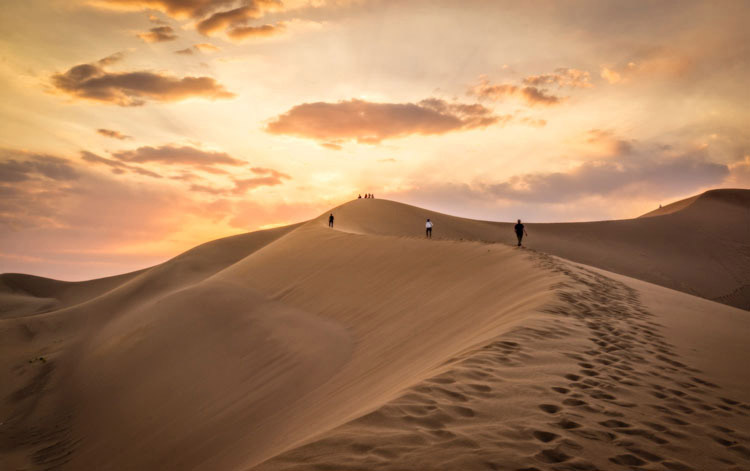
♦ Ardakan Desert or Kavir-e Siah Kuh Desert
Ardakan Desert or Siah Kooh Desert with the shape of a horseshoe is the most important desert in Yazd Province. Kavir-e Siah Kuh is located in the north of Ardakan city and it is surrounded by two individual mountains of Herisht with the height of 1,939 m in the south of and SiahKooh with the height of 2,050 m in the north. The intact desert of Siah Kuh and rare spices of animals has made the area highly important in terms of ecotourism.
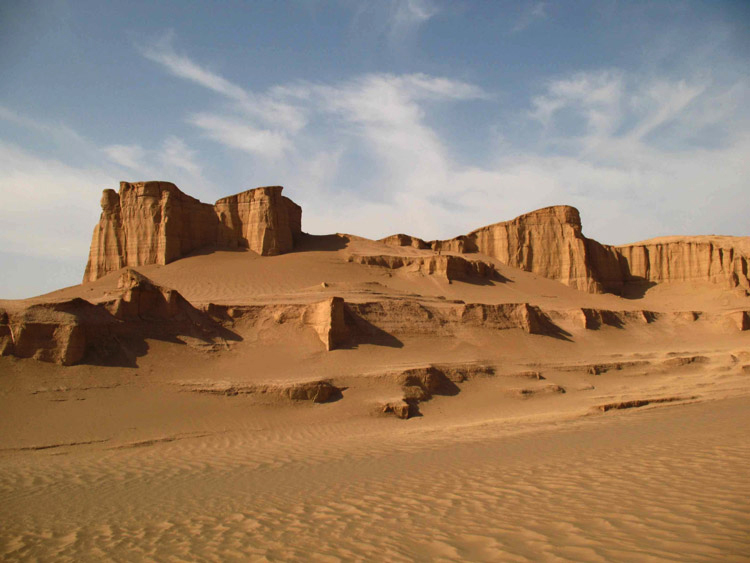
♦ Abarkooh Desert
Abarkooh Desert, one of the most popular deserts in Iran, is a circular area next to Mazra‘eh-ye Zāreh lying between two mountains at the geographical location of N3111 to N3049 and E5326 to E5346. The desert is located in the east of the Abarkuh and surrounded by the mountains from west, southwest, south and east. Abarkouh Desert covers an area of 200,000 ha near Abarkouh town in Yazd province.
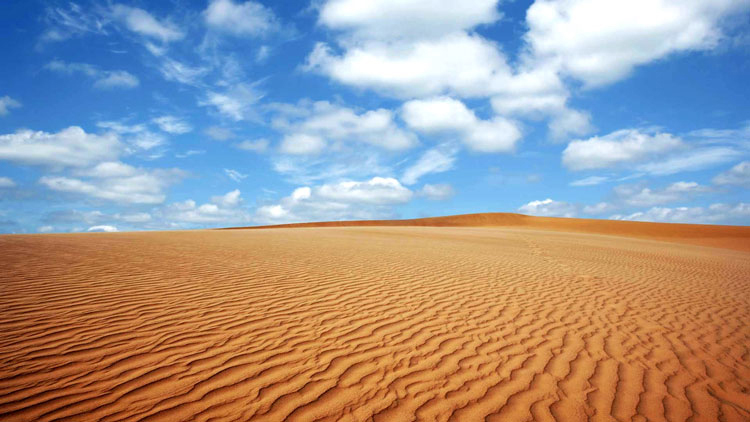
♦ Daranjir Desert
Daranjir Desert is located at the geographical location of N3209 and E5505 at the east of Yazd Province. Being considered the third important one in Yazd, Daranjir Desert covers an area of 750 km2: the width of about 20 km and the length of 75 km. The 60% of Daranjir Desert consists of clay grounds and the 40% are wide salt-lands that is due to the main rivers of the desert going to the southern part leaving the white marginal cones which indicates the incredible salinity of the surrounding areas. Daranjir Desert is a protected area where some scare animal and plant spices are kept from distinction.

♦ Saghand Desert
Saghand Desert is one of the central deserts of Iran and one of the world’s rarest work of nature located in the southeast of the Saghand village in Ardakan, northeast of Yazd province. Kavir Saghand covers an U-shape area of 8,825 ha. The interesting note of this desert is its climate. Generally desert is an area with hot weather but it is not true about the Saghand Desert, even it might be colder than Tehran during summer. Due to the lack of vegetation, there is not almost any wildlife in the area. The first uranium mine with the most productive capacity in Iran was discovered here in 1985.
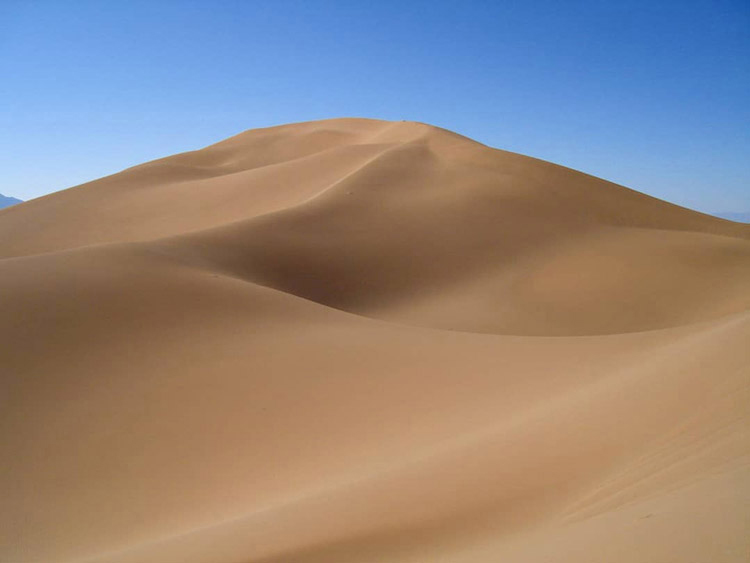
♦ Rig-e Zarin Desert
Rig-e Zarin in Dasht-e Kavir (Kavir Desert) is one of the beautiful sandy deserts of Yazd. It is surrounded by Daranjir Desert in north, Saghand village in northwest and Bayazeh village in south with the geographical location of N3239 and E5458. Rig-e zareen Desert looks like a very high mountain when you are far from it; however, when you get near to it, it starts as a form of a large sand hill. Kavir-e Rig-e Zarrin covers an area with the width of about 15 km and the length of 70 km in the form of an L. The biodiversity of Rig-e zarrin desert deals with wolf, jackal, hyena, sand cat, some lizard types, some scorpion types, eagle, hawk, etc. It should be also mentioned that the sands including Rig-e Zarrin Desert is of the highest-quality sands which is good for both desert trekking and sand therapy.

♦ Fahraj Desert
Around Yazd city, there are different deserts in which most of desert camping sites are founded. One of these deserts is Fahraj Desert located in old village of Fahraj around 35 km from Yazd City. Fahraj desert being located near Fahraj village makes a good opportunity for travelers to both enjoy the tranquility of the desert as well as visit historical sites in the village.
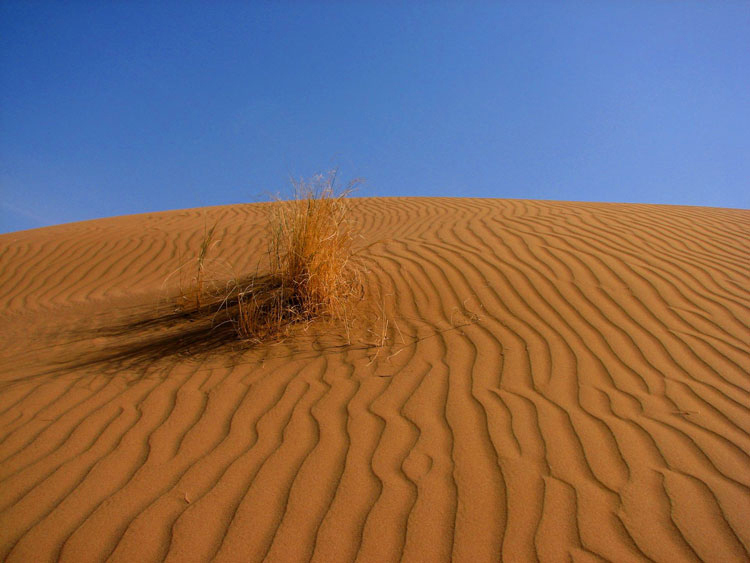
Isfahan Deserts
Isfahan is usually known for its masterpieces of architecture which resemble Persian art and history. It is also famous for the large number of handicrafts and souvenirs that can be bought only in Isfahan or are originated from Isfahan. Beside all these facts, Isfahan province owns beautiful and high quality deserts which attracts many travelers from different parts of the country as well as international travelers. Here, some of these deserts are briefly introduced:

♦ Maranjab Desert
Maranjab Desert is one of the most beautiful and tourist desert areas located in north of Aran va Bidgol in Isfahan province. The high sand dunes, the Salt Lake with wanderer islands which are surrounded by salt instead of water, are regarded as its natural factors that make this desert area popular and special. The highest sand dune around Maranjab is about 70 meters high. The vegetation of Maranjab Desert includes halophyte plants such as tamarix trees, haloxylon trees, and zygophyllum bushes. The biodiversity of Maranjab desert deals with wolf, jackal, hyena, fox sand, sand cat, lizard, chameleon etc.
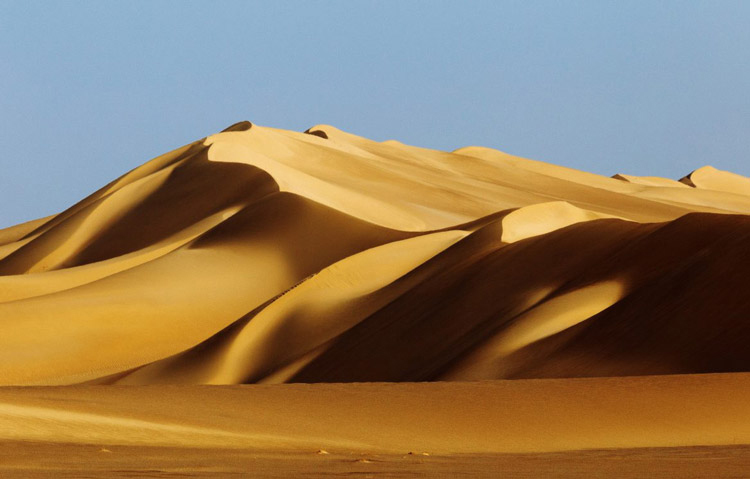
♦ Varzaneh Desert
Varzaneh Desert or Khara Desert is located about 100 km to Isfahan and 150 km to Yazd and in the vicinity of Gavkhuni Wetland. It covers an area of 17,000 ha with the width of about 35 km. Varzaneh Desert is known for its wonderful sand dunes the form of which varies with the wind movements varies into pyramids, crescents and longitudinal forms. Due to the vicinity to Gavkhuni Wetland, the various spices of vegetation grew here. In terms of biodiversity, many species of animals had lived in this area however the number of them have been reduced due to hunting, drying of Gavkhuni Wetland and the destruction of their habitats during recent years. Today, animals such as jackals, rabbits, cats, hawks, cerates, etc. can be found in Varzaneh Desert.
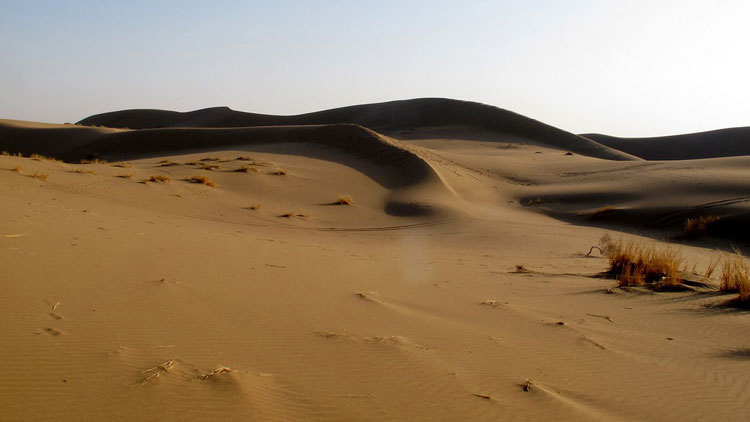
♦ Mesr Desert
Mesr, meaning Egypt in Persian, is a village in Khur and Biabanak county, close to the city of Naein. The village is 371 km far from Yazd. Mesr Desert is regarded as one of the popular and well-known desert areas in Iran. It is called Mesr in memory of Yusuf (Joseph), one of the villagers. Around 100 years ago, the village faced with a lack of the water and to solve the problem, Yusuf dug a deep well to supply the water. Villagers named the village Mesr to remind the story of Egypt and Joseph.
The geographical location of village is N34.4 and E54.47. It is surrounded by mountains from the west, southwest and southeast. Mesr Desert in Khor is also known for its amazing bamboo fields and unique sand hills. The deep well, Selkenoon Hole, Selkenoon Salt Lake are some of the other places that make Mesr Desert a resort for many travelers from different cities of Iran as well as tourists from various countries.
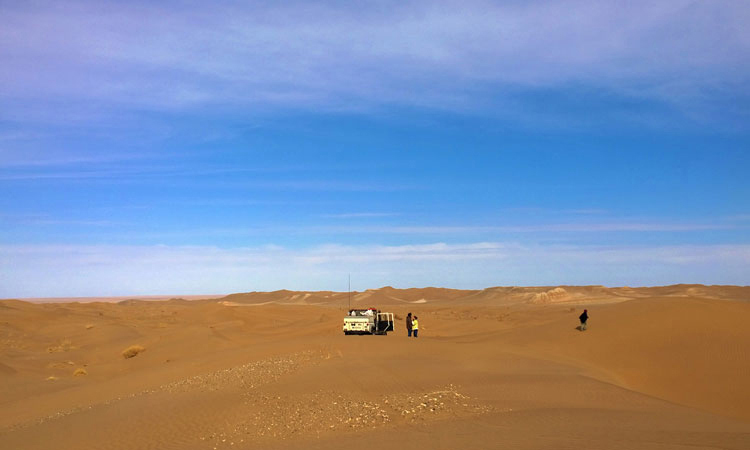
Kerman Deserts
Since Kerman province covers a large part of Dasht-e Lut, it is regarded as the birthplace of Iran deserts. The Lut Desert, Kalut Shahdad Desert are considered the most important desert areas in Kerman.
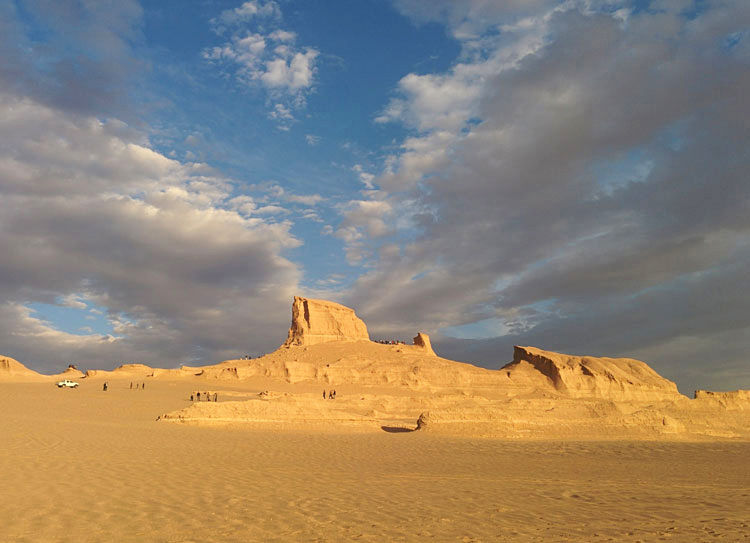
♦ Lut Desert
In Persian, Lut means a bare land without water and devoid of vegetation. The Loot Desert is 27th-largest desert in the world that was registered on UNESCO's World Heritage List and it is the largest desert area in Iran. Dasht-e Lut is located in the provinces of Kerman, Sistan and Baluchestan, and South Khorasan and it is surrounded by mountains. Dasht-e-Lut with an area of over than 50,000 square kilometers covers about 10 percent of Iran's area. Due to the dry, rocky, dark-colored lands and dark pebbles, the Lut Desert has experienced Earth’s highest land surface temperatures between 2003 and 2009 which has been measured as 70.7 °C (159.3 °F) in 2005. It is one of the harshest parts of the world that in some parts there are not any living creatures even bacteria. The desert is divided into three geographic parts including Northern Lut, Central Lut and Southern Lut in terms of geomorphology; i.e. Dasht Sar, Kaluts and Sand dunes, respectively.
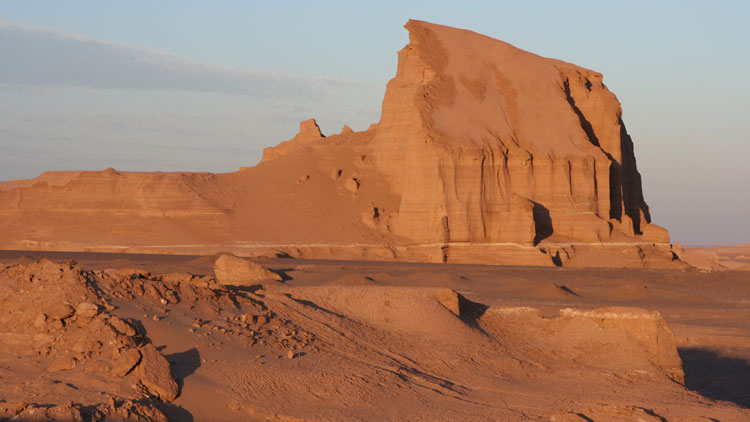
♦ Kalut Shahdad Desert
Shahdad Desert is one of the amazing desert areas in Iran which is located on the western part of Lut Desert and northeast of Kerman city. Shahdad Desert dates back to about 6000 years ago and was found in 1968 by Iranian researchers. Shahdad Desert has some unique features including Kaluts which are the natural phenomena that were formed due to the erosion of water and Aeolian processes and have multiple towers at the center of the desert covering an area 70 km wide from west to east and 145 km long from north to the south. The Kaluts which are also called Gowd-e Namak, Gandom Beryan, or Rig Sukhte Area are recognized as the hottest point on the earth. There is a little vegetation in the desert region. Many monuments from the ancient time to Islamic era such as cemeteries, castles, caravansaries, etc. are found in Shahdad. Shahdad Cemetery is considered its most archeological aspects. The people living in Shahdad in ancient times made statues of their important ones and buried the statues with food and clothes. The oldest metal flag known as Shahdad flag has also been discovered in this desert which proves the greatness of the civilization used to live here in thousands of years ago.
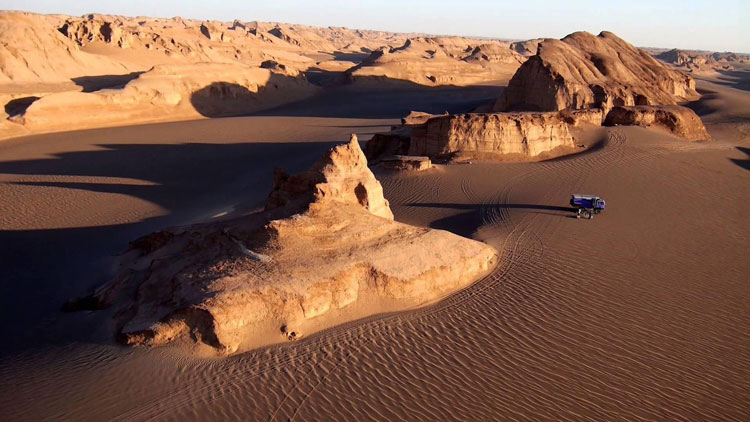
Rig-e Jenn in Semnan Province
Rig-e Jenn or the Bermuda triangle of Iran is a vast area of sand dunes in the middle of Dasht-e Kavir, the central desert of Iran, located in the border of Semnan and Isfahan provinces; however, it is officially governed by Semnan Province. The main elements of Rig-e Jenn are salt, sand and marsh. There are some legends about Rig-e Jenn and locals believe some people are murdered and buried there. They also narrate about the mysterious sounds heard from the desert and consider the desert as a place where devils’ powers and supernatural creatures or jinn live. That is why this part of the desert is famous as Rig-e Jenn, literally means sands for jinn. However, this belief is refused by the scientific experts who believe that it is so difficult to distinguish the marshes properly and the travelers may continue their trip through the wrong directions. The experts also say these voices are made by the wind movement through the natural structures created due to sand displacement and Aeolian processes.
If you are interested to have a tour in Iran deserts, contact us.
